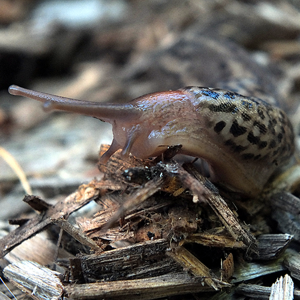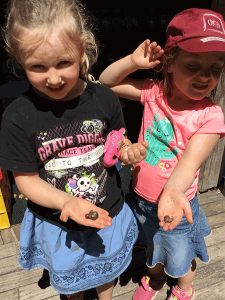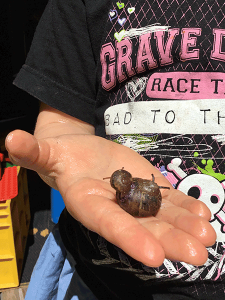Inspiring Curiosity
At Cire Children’s Services, we always encourage our kinder children to have a keen interest in all things, from plants and the environment to animals and insects. You never know where a child’s curiosity will take you. Throughout the year the fascination with insects has steadily grown, but little did we know looking at different insects in the garden would begin something unexpected. It started simply with the discovery of a large leopard slug, which we the named Sally.
Sally was discovered during a yard exploration. The wonder and curiosity were immediately obvious and the rest of the afternoon was spent observing Sally and creating a habitat for her in our room. Originally she was housed in a large glass jar and then graduated to an enclosed fish tank. There were so many fascinating facts about this unusual character to learn. Did you know that they are partially carnivorous, feeding mostly on carrion which is decomposing flesh and other slugs, or that they enjoy munching on the occasional bit of dog food? We also observed its breathing hole, body patterns and method of movement and how the leopard slug is a beneficial insect to have in your garden.
Through Sally this opened up the discovery and interest to explore the insect world exponentially, moving from slugs to their relative, the garden snail. The children began their snail expeditions, slowly collecting enough snails to establish a small population for our now flourishing snail habitat. It was decided to differentiate between the snails using a well-tested method…nail polish! During our research on the terrestrial gastropod’s, we discovered that this was a safe and easy way to tell them apart. Each original snail was given a colour and named by the kinder children.
Using technology and close observation we discovered that snails could hibernate for up to 2 years, and to stay moist during hibernation a snail seals its shell opening with a dry layer of mucus called an epiphragm. Did you know that a snail can live for up to 12 years?

Through caring for our new pets we found out they much prefer leafy greens like lettuce and cauliflower leaf scraps. We observed the way they eat, slowly but continuously munching on greens until the leaves had completely disappeared. We were even able to spy the snail’s tiny mouth moving and cutting holes into the leaves.The research was conducted as a group, learning together that snail’s eyes are located on tentacles attached to the snails head, that they use a “foot”, one long muscle to move about and that the snail must be kept moist, to help them to maintain their mucus coating.
The children feed and spray the snails with water almost daily and regularly removed them from the habitat to interact with them.

All the children have become good little snail carers being responsible and accommodating to their needs, which was evident when 2 large batches of snail eggs were laid. We had the joy of monitoring the eggs and watching as teeny tiny snails hatched and emerged from under the rocks where they were laid. Our baby snails are now fast catching up, growing to their parent’s size. This experience, driven by the children’s recognisable and passionate interest has provided us with countless intentional and unintentional learning opportunities. We have developed a greater understanding and appreciation of the natural world, have had the pleasure to observe the snails full life cycle, the responsibility of caring for another living creature and opened other exciting interests and learning pathways. I can’t wait to see what the children’s curiosity inspires to pursue next.
For further information and 2018 enrolments for our 4 Year Old Bush Kinder Program call 5967 2776 or click here.


